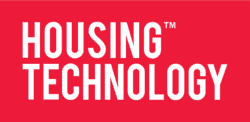With conflicting priorities, no real increases in budgets, a hefty backlog of technical debt and dare I mention AI? It’s understandable why IT leaders might be tempted by the allure of the cool comms-room on a hot summer’s day this July. However, the days of delivering technology in isolation within the back office of the IT department are long gone.
Current challenges
The technical debt that has built up across the sector is significant. To really shift the dial and deliver a service that clients now expect from their housing providers, IT leaders must transition from ‘lights-on’ IT service management operations to becoming true business enablers.
However, internal IT teams, no matter how innovative, can’t do it alone. It is therefore falling on the large HMS providers to invest in the sector and expand their cloud and true SaaS offerings to unburden housing providers from the overheads of ageing infrastructures, services and applications.
Once cloud and true SaaS offerings in the sector become the norm, IT teams will then be able to focus on value-added services for the business and the clients they serve.
The main issue with legacy housing systems is that they incur significant hidden costs of maintaining the underlying infrastructure requirements and support. This often leads to substantial revenue costs with no suitable alternative in the market.
For too long, IT teams and managed service providers have spent valuable time patching, monitoring and managing these services, which are now becoming an unwelcome overhead, detracting from the true value proposition of internal IT resources, which should be at the forefront of business transformation and operations.
Stepping out from the shadows
‘Shadow IT’ is also a growing problem, typically stemming from teams with the largest budgets. In many organisations, those departments with significant financial resources can bypass IT governance and procure their own solutions. While this might offer quick fixes, it also introduces risks, including integration problems, security vulnerabilities, increased costs and support challenges, not to mention the friction it creates between the business and IT teams.
To mitigate these risks, IT leaders must foster strong communication channels and create collaborative environments where all departments align their business and technology initiatives with the organisation’s overall business strategy. By implementing a clear framework linked to business strategy for initiatives and workstreams, it can encourage open communications, which in turn can help bring these disjointed activities out of the shadows and into a clear programme for all to buy into and benefit from.
Role of IT leaders
The most successful strategic IT leaders and innovators in our sector always have a wide-angle view of the entire business, ensuring their expertise extends beyond being just the technology delivery agent. The biggest challenge facing IT leaders in the sector today is juggling their ageing housing management systems, end-of-life infrastructure and the demands of the business to deliver the latest and greatest technology while also contending with limited resources.
Firm foundations
To drive change across a business, core infrastructure, business systems and data sets need to be built on solid foundations. Without this, businesses risk inefficiency, failed projects and frustration.
It’s essential that strong IT leadership (both at board and leadership levels) is displayed to bring all areas of the business together before engaging in the next wave of technology and hype. If IT leaders can’t do this, they risk becoming irrelevant and shadow IT teams with larger budgets and ambitions will lead, resulting in disjointed projects focused solely on quick wins rather than comprehensive housing service delivery and transformation.
Historically, the role of an IT leader has been about delivering technology and ensuring the business’s needs are met. However, with the rise of new technologies, such as AI, and the need for businesses to transform and do more with less, IT leaders must expand their focus beyond merely implementing technology. Best practices in IT service management, such as ITIL, emphasise the importance of considering the ‘4Ps’ of people, processes, partners and products and not being led by the shiniest new thing in town.
A question for your business
Seasoned IT leaders ensure a strategic balance by integrating business needs, long-term strategy and emerging technologies.
The question that needs answering in your business is: where do your IT teams spend their time and resources? Are they innovating holistically across the business, sinking in technical debt or hiding in the cool comms-room on a summer’s day?
Ian Crocker is the founder of LeanIT.

